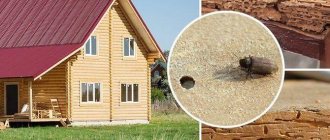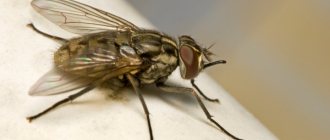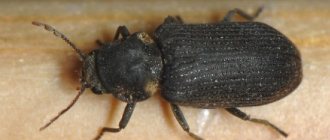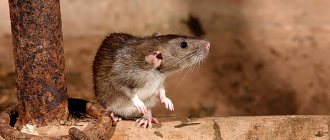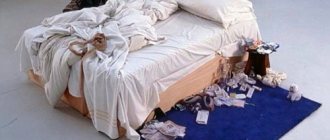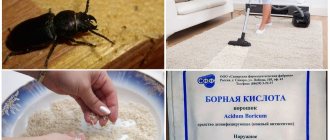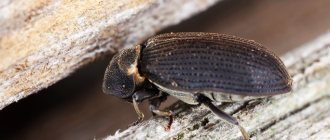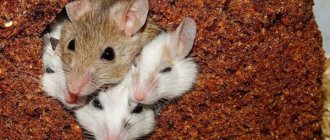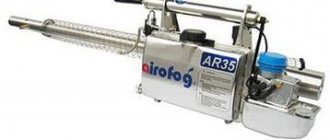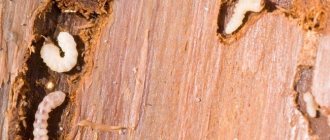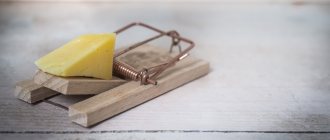Despite the fact that wood is not a very nutritious material, there are hunters who want to feast on it. We are talking about longhorned beetles, or as they are also called lumberjacks, which cause enormous damage to wooden buildings. There are a great many species and subspecies of these pests - these include the purple longhorned beetle, the furniture grinder, and the black house beetle. There are also false bark beetles and borers. All of them damage the wood, the consequence of which is the weakening of the structure of the house, and sometimes its destruction.
How does the longhorned beetle colonize a tree?
The female, with her first pair of jaws, makes a small depression in the tree bark, then begins to deepen it and lays eggs in it. This is how wood (pine) becomes infected with the longhorn beetle. As shown in the photo.
The female lays eggs in any suitable hole in the tree, preferring peeled bark. If necessary, she bites out a nest in the wood, finding a weak spot in it. The larva, developed from an egg, has a thick soft whitish body, a small head, powerful jaws and a brutal appetite. Before pupation, the larva in our climatic conditions can eat your house for up to 5 years.
The longhorned beetle, as soon as it is born, is immediately ready to reproduce its own kind. By the way, the beetles themselves prefer to use the pistils and stamens of flowers and tree leaves as food.
The longhorned beetle chooses higher places for breeding, so it is quite difficult to detect its passages. The female lays up to 400 eggs, making holes in the tree with her jaws. The larvae hatch after 2 weeks and begin to bite into the tree at breakneck speed. Traces of their activity can be identified by paying attention to the presence of drill flour, dust or sawdust. The female lays her eggs very deeply in the tree and after approximately 2 weeks the larvae of the longhorned beetle hatch. Having hatched, the larvae begin to eat the tree at breakneck speed, making more and more new moves.
The habitat of moustached beetles is dry trees. Destroy dead wood on your plots.
Types of wood pests
In nature, there are quite a few insects that prefer wood as a source of food. Bark beetles love to settle in living trunks, and woodworms have chosen buildings, pieces of furniture and other wooden structures.
House grinder
It has taken a liking to the outer walls of buildings and feels great eating raw wood. The small size of the insect makes it difficult to find, but the winding passages have not gone away and the pest can be identified by their presence.
Furniture sharpener
A rather cunning beetle, it hides in furniture and its upholstery and hides in any danger. It is not easy to detect, but with proper attention, small holes can be found that will confirm the home owner's worst fears. It is small in size and eats everything that contains cellulose.
Common comb grinder
This beetle has luxurious branched mustaches, which does not change the attitude towards it, since it is also a malicious pest of everything wooden. This variety is very difficult to breed. The larvae live a long time, from 5 to 20 years, turning into dust everything they can reach.
Bread grinder
He left the hard and insipid wood to his brothers and settled in the kitchen and pantry, where food supplies are stored and does not ignore cereals, grains, pasta and dried fruits. He not only spoils supplies, but also poisons them with elements of his life activity. If a pest is spotted, the products spoiled by it will have to be thrown away.
Varieties of wood beetles
insects use living trees and wooden buildings not only as a source of food. Their home is also located there; their larvae develop in the thickness of the tree, gnawing what the adult insects did not eat, sometimes causing even more harm. In nature they have natural enemies - birds, ants. And the fight against beetles in a wooden house falls entirely on the shoulders of the owners. To successfully resist pest invasions, you need to know them. The most common types are:
- a grinder, destroying wooden structures from the inside;
- a driller who does not eat wood, but colonizes the mycelium he needs in the drilled holes;
- a weevil that loves damp buildings and wood scraps thrown in the rain without proper protection;
- longhorned woodborers, which prefer coniferous wood, especially bark;
- Pseudobark beetles easily destroy even oak buildings, skillfully hiding in winding passages inside the woody area.
Professionals will help you fight the longhorned beetle
To treat the external surface of a wooden house with Clipper, you can invite a specialist with a cold or hot fog generator. This treatment allows you to evenly cover the entire treated surface with drops of insecticide, spending less time on it and saving on consumables.
Be wary of the proposal to treat your house against insect pests with a combination of Clipper and Bi-58. The poisonous drug Bi-58 is a bright blue liquid containing phosphoric acid esters, which leaves irremovable stains and an ineradicable chemical odor after its use. It is strictly forbidden to use this drug for treating interior spaces.
In the market for services offered by professionals for the destruction of wood-eating insects, the following areas deserve attention:
- Fumigation with Phosphine;
- Microwave disinsection.
- XILIX GEL
These methods have their advantages and disadvantages. They can only be used by specialists who have undergone special training, confirmed by the appropriate certificate.
Prevent beetle infestation
To prevent barbel infestation, it is necessary to treat the wood. Until this point, all wooden objects that you are going to disinfect must undergo several necessary operations. For example, such as drilling, cuts, etc. After that, apply the necessary product using any of the methods - immersion, spraying or vacuum. It is very important that all surfaces are treated, both to eliminate the infestation of longhorned beetles and to prevent their occurrence.
XILIX® Gel fungicide and insecticide in one bottle with a 10-year guarantee!
XILIX® Gel is an innovative development for combating any wood pests such as longhorned beetles, borers, shashel, wood borers, etc. It is also an effective professional biocide that effectively destroys mold, mildew, and copes with wood rot and defects.
Indispensable for the prevention and treatment of wooden structures.
• Destroys termites, borer beetles, bark beetles, wood borers, longhorned beetles, etc. • Economical and easy to use • Safe for people • Strengthens the structure of the wood • Ready to use, the gel does not flow, leaves no traces • Penetrates deeply into the wood
XILIX® Gel is an excellent, safe alternative to phosphine gas fumigation with a 10 YEAR warranty! High efficiency is achieved thanks to properly selected gel components. Biocides and permethrin in the composition give a fantastic insecticidal and fungicidal effect.
Thanks to its thixotropic formulation, the gel works without loss of properties even in a thick layer of wood, thereby reducing the number of applications to obtain the required therapeutic or prophylactic dose of the gel.
Meaning, benefit and harm
Longhorned beetles feed mainly on dead wood, which makes them an important link in the cycle of substances in ecosystems. Sometimes this wood is used for building materials or buildings, in which case the beetles can cause serious economic damage. Species that feed on living trees are also considered pests.
Black (bronze) pine longhorned beetle
How to protect the outside of your home with Clipper insecticide
Very good results are obtained if the new generation preparation Clipper is used for processing wooden structures. But it is effective to use only for protecting the external walls of the house; it is not suitable for indoor treatment.
The chemical insecticide Clipper (produced by ZAO FMRus) destroys and repels longhorned beetles, and also affects their reproductive system and inhibits the development of laid eggs. The drug has a contact and intestinal effect on beetles and their larvae.
Once in the body of the larva, the drug causes disruption of metabolic processes and paralysis, leading to the death of the pest. A beetle, sitting on the treated surface and coming into contact with the preparation, will die without laying a new egg.
The drug is recommended for use on lumber and the external surface of a wooden house. Treatment of dry wood should be done with a solution prepared strictly in accordance with the instructions, in dry cloudy weather, avoiding direct sunlight.
Its economical use, high efficiency and fairly low toxicity have been proven. However, it is a pesticide and its use requires compliance with special safety rules. Therefore, it is better to entrust the processing to specialists.
Pest prevention
Wood beetles in a wooden house bring a lot of trouble; if you miss the moment and leave events uncontrolled, then the matter can end in complete damage to the walls and beams of the building. Planned prevention should be a mandatory measure to preserve housing built from wood. It is much easier to prevent a problem than to solve it valiantly later. And in the fight against woodworm, victory may remain on his side.
Enjoying breakfast and lunch with delicious floors for several years, the grinder beetle and its family are capable of completely collapsing a house of any size. To avoid disastrous results from pests, a set of preventive actions should be carried out regularly.
Getting rid of unwanted neighbors
Getting rid of bark beetles should not be delayed. At the first sign of their presence, take measures to destroy them. There are several ways to remove the pest. They are divided into:
-
Contact
. “Clipper”, “Antizhuk”, “Empire-20” are considered effective defense weapons. The substance included in their component destabilizes the possibility of reproduction - the beetles will not be able to lay eggs, and their number in the house will noticeably decrease.The preparations are poured into the cracks, then covered with plasticine. The product penetrates into the body of the barbel, inhibits its metabolic abilities, and the parasite dies. Use insecticides before starting to build a house made of timber; treat the tree annually for preventive purposes. Read the instructions carefully; the drugs require careful use because they are poisonous.
- Intestinal
. Control means are poisonous baits that attract barbels. Having tried them, the bark beetles will die.
Are insects capable of flight?
Longhorned beetles are large insects.
It's hard for them to fly. Maneuvering requires speed, landing successfully requires effort. When flying, they emit a sound that is clearly audible. Location and weather conditions influence the beginning of takeoffs - in southern latitudes this is the beginning of spring, in the middle zone - the first two months of summer. Insects of Asian countries prefer autumn. Many are active during the day when it is hot. Some species leave their shelter overnight.
The flight function is needed to search for food. Females and males have different desires for flights, everything here is determined by the species.
